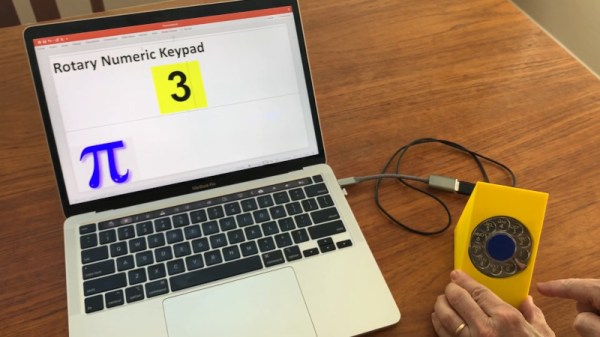Many laptops eschew the numeric keypad to free up space, and some desktop keyboards have taken on the trend, too. If you want a specialised numeric entry device and have absolutely no interest in speed or ease of use, [jp3141] has just the build for you.
The idea is to use the rotary dial from an old telephone to enter numbers into a computer. It’s slow and cumbersome, but it’s also pretty entertaining. The build uses an old AT&T Trimline dialer, though we’re sure most rotary phones would work. The pulses produced by the dialer are counted by a Teensy microcontroller, which emulates a USB HID keyboard device and enters the relevant keystroke into the computer. There’s also a USB serial interface for debugging, and an LED which flashes along with the pulses from the dialer circuit.
While it’s not the most efficient data entry method, it’s a semi-useful way to repurpose an old phone, and an amusing piece to take along to your next LAN party. We’ve featured a few… alternative… keyboards before, too. If you’ve cooked up a truly convoluted input device for your computer, be sure to let us know.













